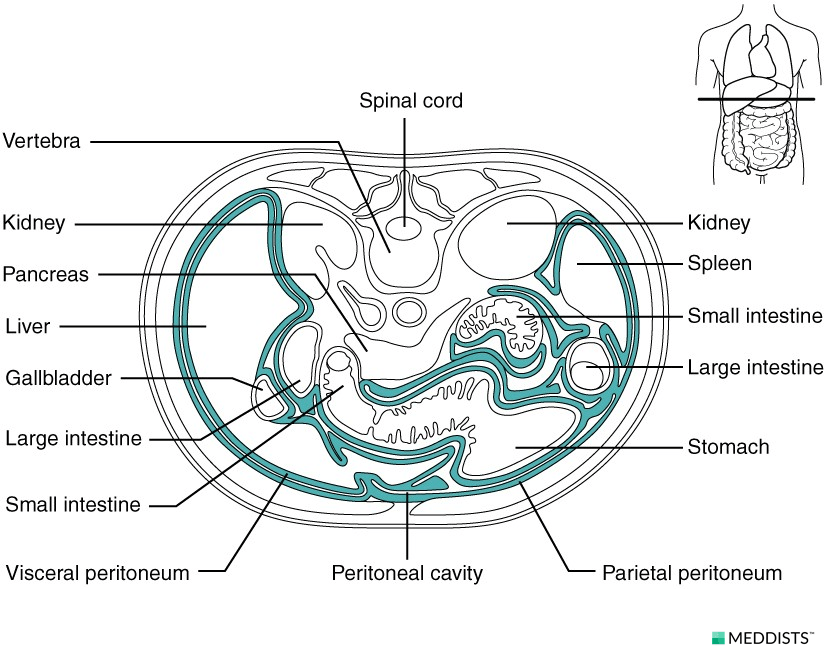The peritoneum is a continuous layer of connective tissue separating organs from body walls, resembling a collapsed sac, much like the pleurae of the lungs, and pericardium of the heart.

Description
The peritoneum is divided into the visceral part (lines the viscera — organs) and a parietal part (facing body walls), forming the peritoneal cavity in between.
- In men, the peritoneum is completely sealed, while in women, the uterine tubes form openings in the peritoneum.
- The visceral peritoneum is sensitive to stretching and chemical irritations.
- The parietal peritoneum is sensitive to touch, heat and cold.
- The peritoneum consists of squamous epithelium — mesothelium, made of mesothelial cells, and it develops from the mesoderm lining the body wall.
Functions
- Compartmentalization
- Protection — waterproof barrier
- Lubrication to prevent friction and allow movement of organs
- Fat storage
Folds
Peritoneal folds are formed by multiple layers of the peritoneum. These folds are named according to the organ they come in contact with:
- Omenta —
